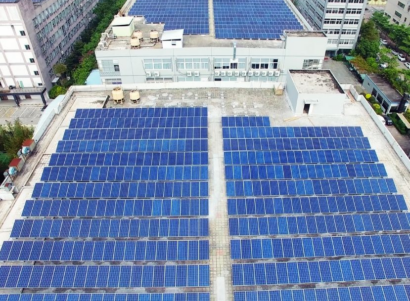OAKLAND, CA – Oil and gas emissions vary widely throughout the supply chain, making mitigation of both super-emitters and emissions sources near populations top priorities for public health and climate, according to findings from a literature review by the nonprofit energy science and policy institute PSE Healthy Energy. Methane and Health-Damaging Air Pollutants From the Oil and Gas Sector: Bridging 10 Years of Scientific Understanding is the first systematic review to bridge the gap between research on sources of methane and sources of health-damaging air pollutant emissions throughout the oil and gas supply chain.
“There is unequivocal evidence that we must rapidly and aggressively reduce methane emissions to avoid catastrophic changes to our climate,” said the review’s lead author, PSE Healthy Energy Senior Scientist Drew Michanowicz, DrPH, MPH, CPH. “Because methane is nearly always emitted alongside other health-damaging air pollutants, we should be urgently focusing on eliminating methane pollution near where people live as a critical and cost-effective strategy to protect public health.”
Overview of Findings and Recommendations:
- Oil and gas sources of methane emissions are nearly always sources of health-damaging air pollutants (HDAPs). However, not all sources of HDAPs are sources of methane.
- Super-emitters of both methane and HDAPs are present in every sector of the oil and gas supply chain, providing clear evidence that substantial emissions reductions are possible.
- To increase public health benefits, prioritize oil and gas emissions reductions near population centers.
- Efforts to reduce fugitive emissions (i.e., venting and leaks) throughout the oil and gas supply chain will result in the co-reduction of emissions of both methane and certain HDAPs.
- A comprehensive approach to reducing methane and HDAP emissions should include installing maximum achievable equipment controls, conducting routine preventative maintenance, and integrating new monitoring technologies to improve upon existing operational and maintenance practices such as leak detection and repair programs.
- Over the past decade, the scientific understanding of oil and gas emissions has increased substantially. While additional research gaps remain, calls for additional research should not be used as a barrier for taking immediate action through emission controls and monitoring systems to further reduce oil and gas emissions.
- There is now unequivocal evidence to support swift and aggressive actions to avoid shorter-term global warming and reduce public health harm. The transition away from oil and gas must be managed in a way that does not result in degraded operation and maintenance practices and potentially increased emissions.
- While the geographic location of methane emissions does not affect their climate impact, proximity to sources of health-damaging air pollutants increases health risks and impacts. In the papers reviewed, the authors found no evidence that sources of methane emissions are not also sources of health-damaging air pollutants. The researchers did find infrastructure, particularly within the upstream oil and gas sector, that emitted health-damaging air pollutants without methane.
This finding suggests that the health and cost benefits of reducing methane emissions from the oil and gas sector are undervalued and that reducing these emissions near human populations will ensure climate mitigation efforts also benefit public health. However, the findings also indicate that efforts to reduce methane emissions will not capture all sources of health-damaging air pollutants. As such, in addition to targeting methane sources, regulators and risk managers should incorporate strategies that reduce health-damaging air pollutant emissions, particularly from oil and gas infrastructure that is located near where people live, work, and play.
The authors reviewed 270 pieces of peer-reviewed literature on primary data collection efforts published between 2015-2020 to identify characteristics of emissions sources where health- and climate-damaging emissions occur simultaneously and separately. A supplemental review of research on methane and health-damaging air pollutants spanning 2010-2014 is provided in the appendix. The report highlights high-impact approaches to emission control across the upstream, midstream, and downstream portions of the oil and gas sector to protect the climate and public health.
The literature review was authored by Drew R. Michanowicz, DrPH, MPH, CPH; Eric D. Lebel, PhD; Jeremy K. Domen, MS; Lee Ann L. Hill, MPH; Jessie M. Jaeger, MPH, MCP; Jessica E. Schiff; Elena M. Krieger, PhD; Zoya Banan, PhD; Curtis L. Nordgaard, MD; and Seth B.C. Shonkoff, PhD, MPH.
###
About PSE Healthy Energy
PSE Healthy Energy is a nonprofit research institute dedicated to supplying evidence-based scientific and technical information on the public health, environmental, and climate dimensions of energy production and use. We are the only interdisciplinary collaboration focused specifically on health and sustainability at the intersection of energy science and policy. Visit us at psehealthyenergy.org and follow us on Twitter @PhySciEng.













